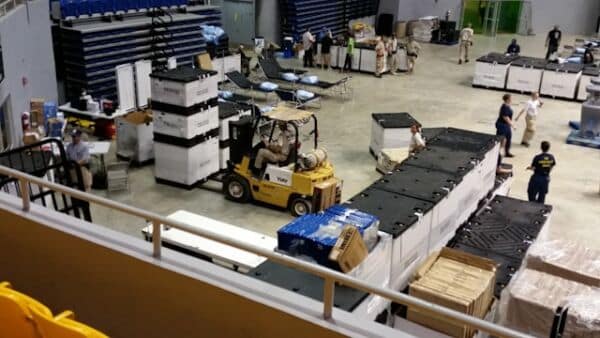What is the quickest way to destroy morale at work? Give workers the impression that they are expendable.
Poor safety measures immediately damage staff dedication. From broken tools to inadequate preparation to leaders who dismiss dangers, these conditions add tension, reduce output, and push workers toward the exit door. The environment becomes toxic as fear spreads through teams.
On the other hand, organizations that focus on preventing risks help workers thrive. Their commitment to protection tells staff they matter. Research repeatedly confirms this: Enterprises with thorough safety programs see improved attendance, closer teamwork, and employees who take pride in their roles.
However, protective equipment and rules represent only part of the story. At its core, workplace safety builds foundations of mutual respect between leadership and staff. Through dedicated safety programs, organizations demonstrate care for their people. This transforms a job into a place where individuals give their best daily.
Training & Certifications: Keeping Employees Skilled and Confident
Proper job preparation enables employees to deliver better results with increased focus. Insufficient training creates doubt, errors, and workplace anxiety, which damage organizational output.
The stakes rise in positions with safety concerns. Companies that invest in skill upgrades and renew certifications help staff members build self-assurance and reduce accident risks. For example, industries requiring heavy machinery should prioritize forklift certification for experienced operators to ensure that even seasoned workers stay updated on best practices. Experience alone fails to guarantee adherence to recent protection standards.
Once staff members see their organization’s dedication to professional development, they form deeper connections to their roles, take ownership of tasks, and add value to workplace security and output.
The Psychological Impact of Workplace Safety
Have you ever had a job where you felt like just another number? Where management didn’t even pretend to care about your well-being? It’s the worst.
Feeling safe at work isn’t just about avoiding physical injuries—it’s about knowing your employer has your back. When companies invest in safety, employees feel valued and respected and are more invested in their work.
There is science to support this. Studies show that people who feel safe at work are happier, less stressed, and more likely to stay engaged. Gallup even found that engaged employees are 48% less likely to experience burnout.
Nobody wants to work for a company that treats them like they’re replaceable. Want better engagement? Start by making people feel like they matter.
Fewer Accidents, More Productivity
Do you know what kills productivity? In a workplace where injuries are common, they could be part of the onboarding process. When employees constantly worry about getting hurt, they become distracted. And distracted workers are not precisely at peak efficiency.
Workplaces prioritizing safety have fewer accidents, which means fewer sick days, fewer insurance claims, and fewer employees plotting their escape. Plus, when people aren’t busy dodging hazards, they can focus on their jobs.
Take manufacturing, for example. A company that maintains equipment enforces safety protocols, and adequately trains employees will experience fewer disruptions and more efficient workers. It’s just common sense.
Making safety a priority prevents injuries, keeps operations running smoothly, and employees wanting to do their jobs.
The Ripple Effect: Safety Culture Fosters Leadership & Teamwork
A solid safety culture doesn’t just protect employees—it empowers them. When safety is a priority, people start looking out for each other. Did someone spot a hazard? They speak up. Does someone forget to wear the right gear? A coworker reminds them. This environment builds trust and teamwork, and—whether companies realize it or not—future leaders. Think about it: The guy who double-checks safety procedures today might be stepping up into management tomorrow.
A workplace that encourages safety does more than prevent accidents. It creates an environment where employees care about what happens around them. When people feel accountable for their workplace, they naturally become more engaged.
Retention & Reputation: Why Employees Stay Where They Feel Safe
A high employee turnover rate is a red flag, typically a warning of underlying workplace issues, such as bad management, limited career development opportunities, or an unsafe working environment.
The logic here is simple. People won’t stay in a place where they feel threatened. Employees who believe their business will prioritize their safety will stick with it. When employees remain on the job, companies eliminate the cost of recruitment and training while keeping an experienced, steady workforce.
A safety focus strengthens a company’s image and retains employees. Organizations that value protecting their employees can attract the best and brightest and gain the trust of customers and partners. Conversely, a firm with a track record of repeat accidents or safety violations finds it challenging to earn credibility.
Safety in the workplace is not policy-only—it’s building a company people want to be at.
Conclusion: Workplace Safety is an Investment in People for the Long Term
A safe workplace is active. When employees feel valued, safe, and taught, they are more dedicated to their work and more driven. People working for organizations prioritizing their health are more dedicated, proactive, and cooperative.
Investing in workplace safety is not a one-time expense but a long-term strategy for success. It reduces mishaps, boosts employee satisfaction, and creates a culture of trust throughout the organization. When workers trust their company, they’re more inclined to give it their all daily.
This isn’t about benefits or team-building events. It begins with creating a workplace where workers feel secure, enabled, and supported to perform at their best.
Because when individuals have security, they don’t arrive—they flourish.







Leave A Comment